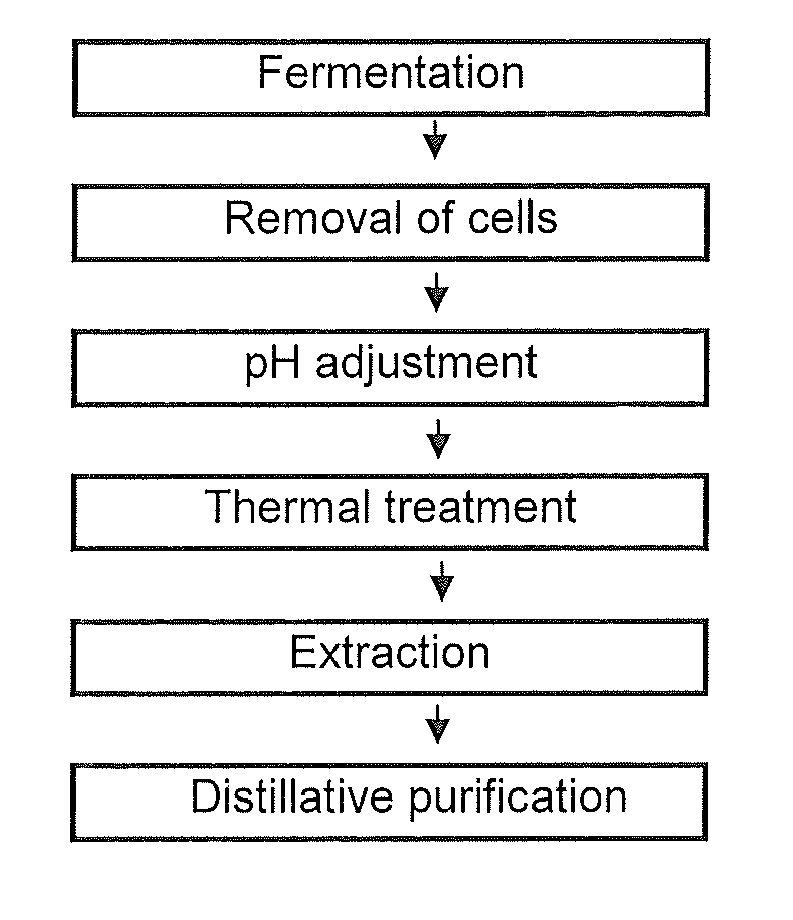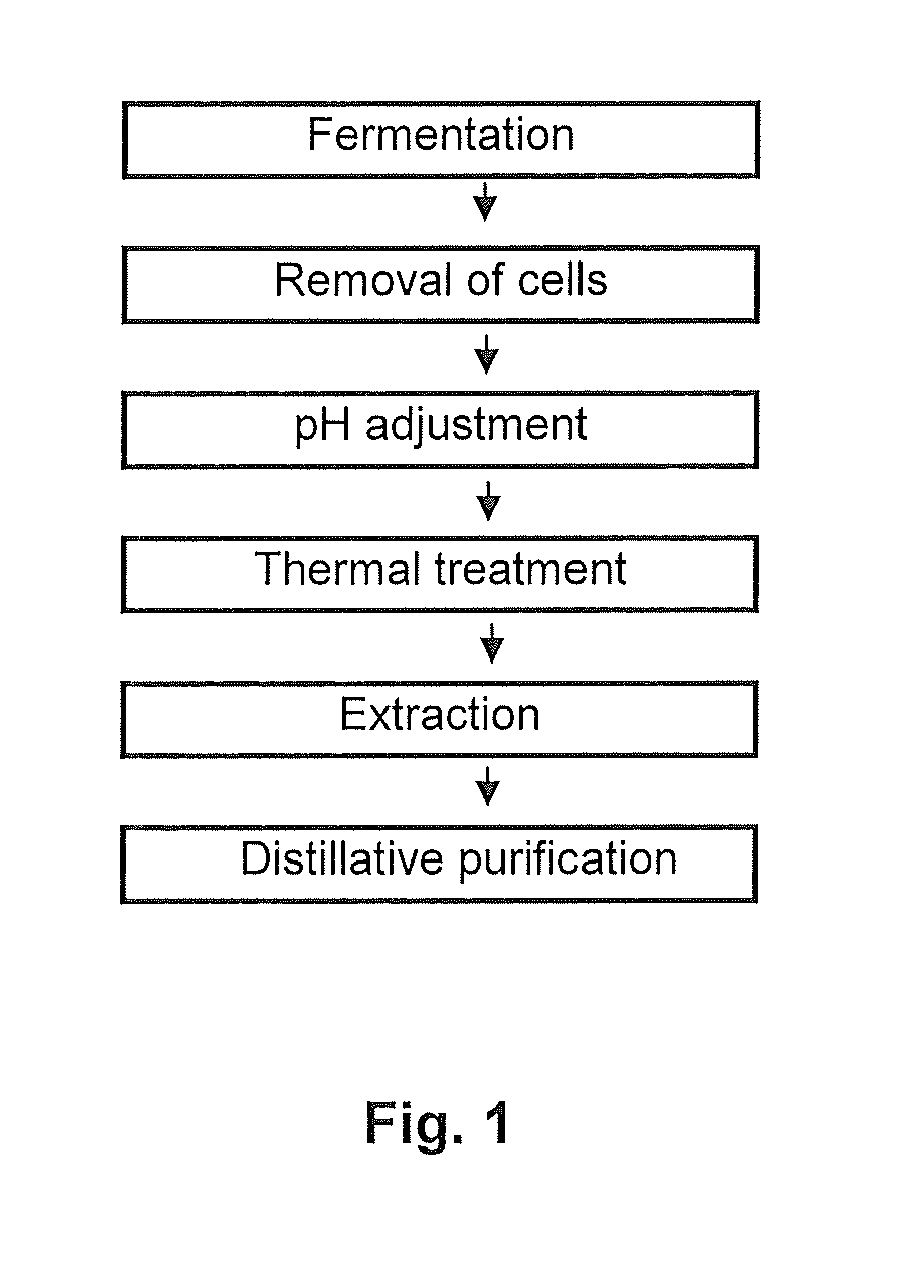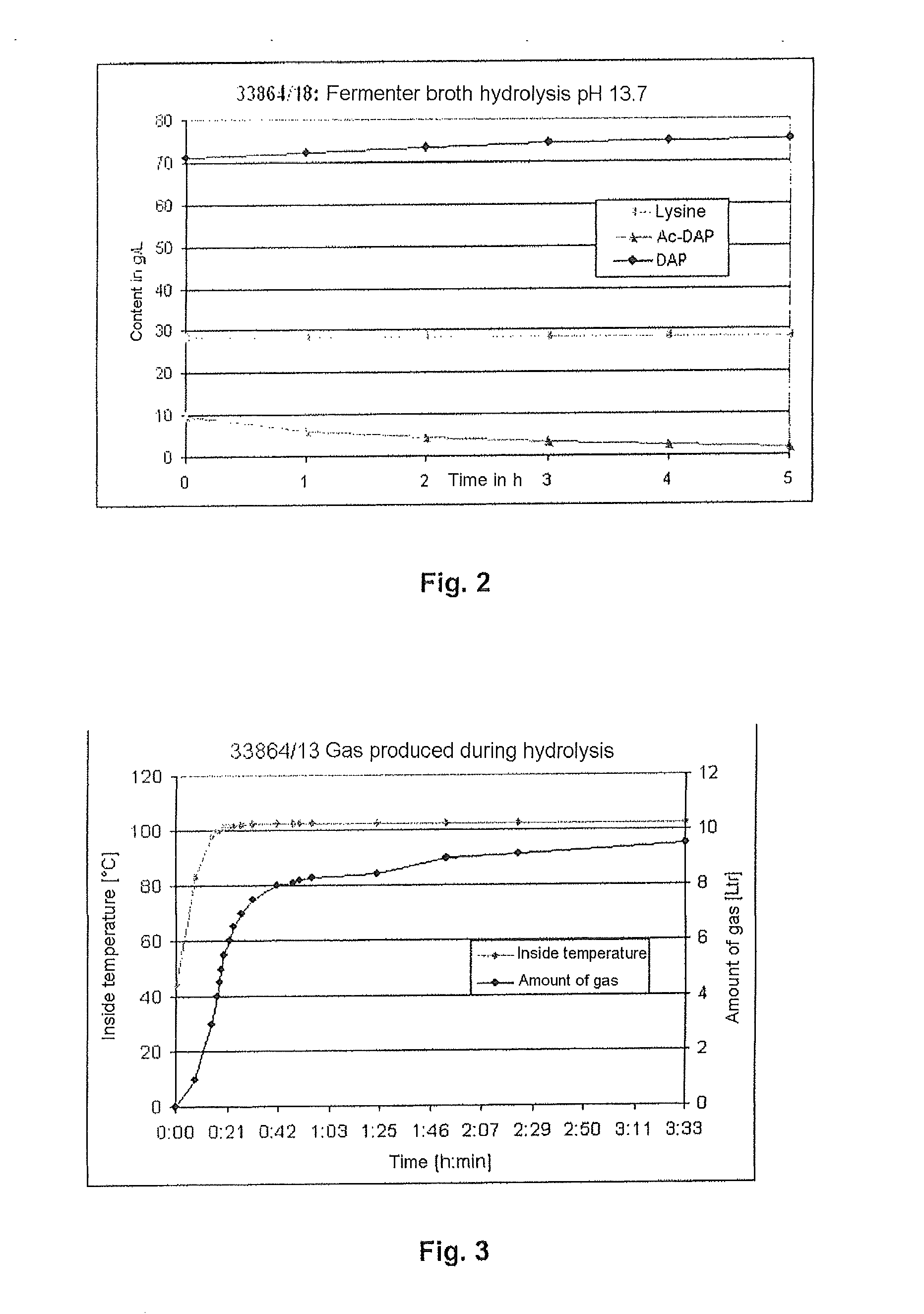Method for Fermentatively Producing 1,5-Diaminopentane
- Summary
- Abstract
- Description
- Claims
- Application Information
AI Technical Summary
Benefits of technology
Problems solved by technology
Method used
Image
Examples
exemplary embodiment 1
Recovering DAP From Fermentation Broth of a Lysine- and DAP-Producing Microorganism
[0088]a) Thermal treatment and extraction procedures (single batch)
[0089]A 1 m3 stainless steel tank was charged with 750 kg (670 I) of cell-free fermentation broth adjusted to pH 13.5 with NaOH. The reactor contents was heated to reflux temperature (approx. 103° C.) and refluxed for 5 hours. The ammonia-comprising off gas produced in the process was collected through a gas washer (with water as washing liquid). After cooling to 60° C., 140 kg of n-Butanol were fed in, followed by stirring at 60° C. for 15 minutes, and the mixture was left to settle for 2 hours. After phase separation, the lower, aqueous phase was discharged into a 1 m3 container. The organic phase was collected in another container. The aqueous phase was extracted a further two times at 60° C. with in each case 140 kg of n-butanol, after 35 I of deionized water had been added in each case.
[0090]In total, 590 kg of organic extract pha...
PUM
| Property | Measurement | Unit |
|---|---|---|
| Volume | aaaaa | aaaaa |
| Volume | aaaaa | aaaaa |
| Volume | aaaaa | aaaaa |
Abstract
Description
Claims
Application Information
 Login to View More
Login to View More - R&D
- Intellectual Property
- Life Sciences
- Materials
- Tech Scout
- Unparalleled Data Quality
- Higher Quality Content
- 60% Fewer Hallucinations
Browse by: Latest US Patents, China's latest patents, Technical Efficacy Thesaurus, Application Domain, Technology Topic, Popular Technical Reports.
© 2025 PatSnap. All rights reserved.Legal|Privacy policy|Modern Slavery Act Transparency Statement|Sitemap|About US| Contact US: help@patsnap.com



